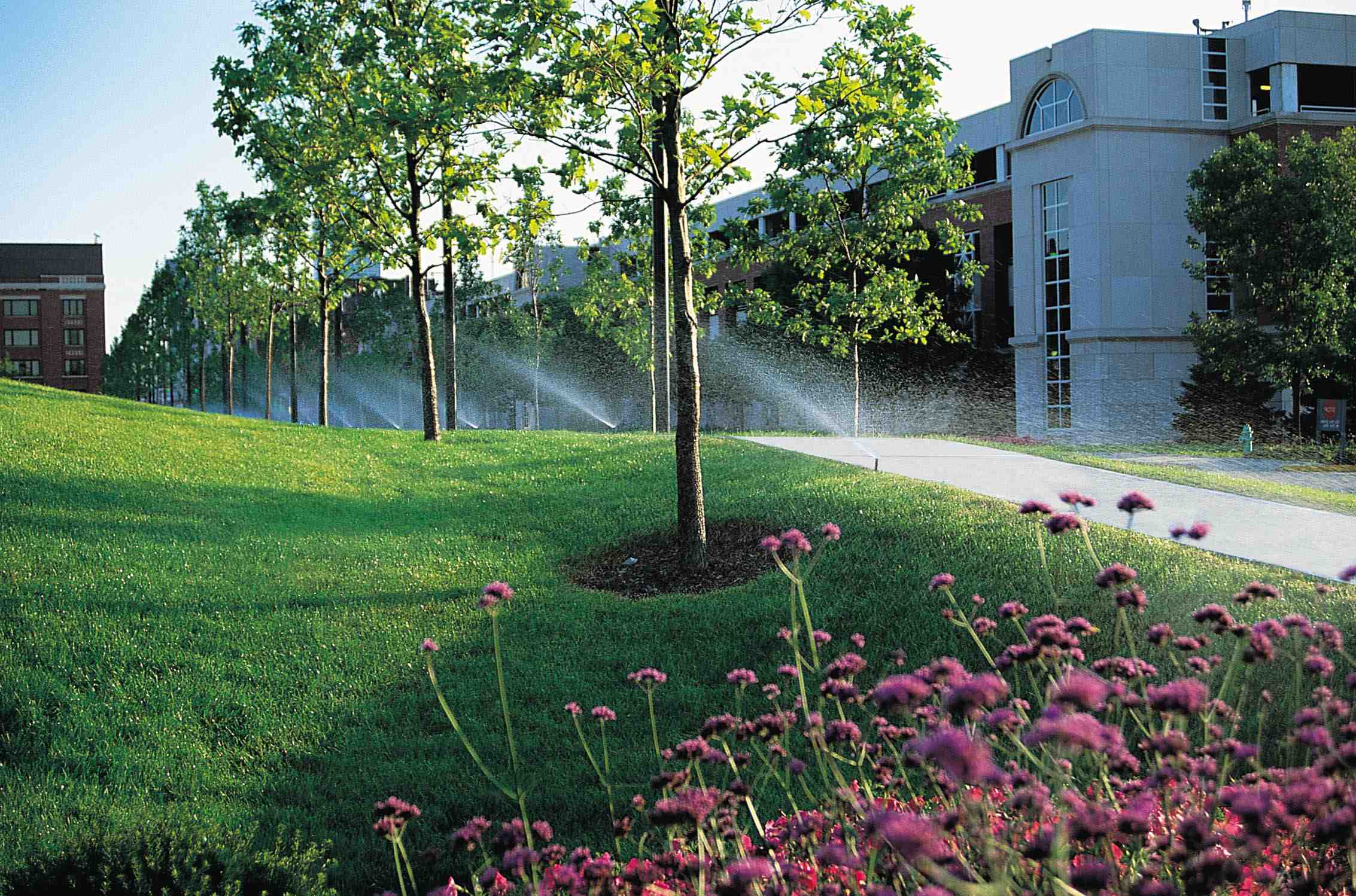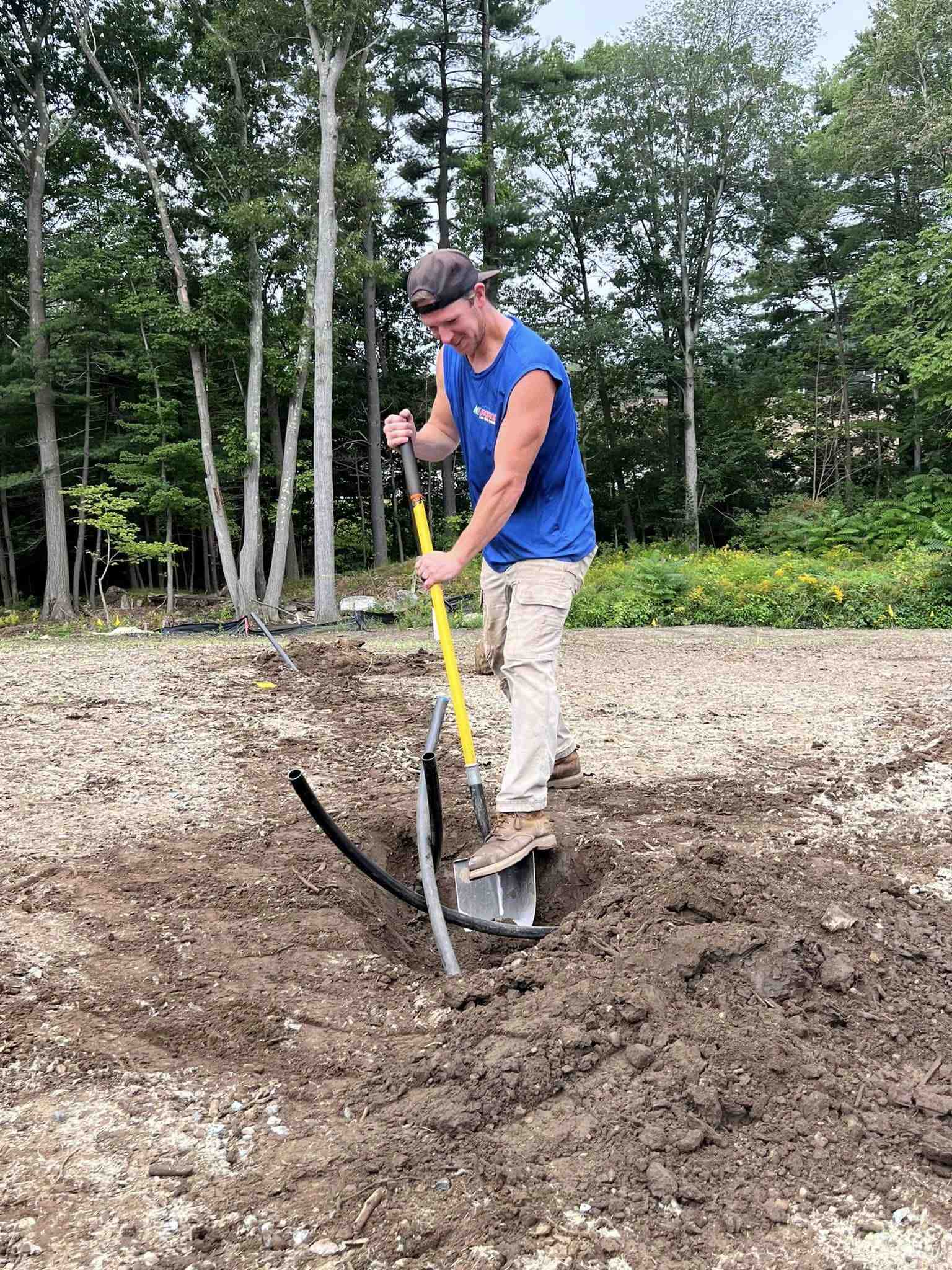The 10 Best Irrigation Supplies for Your Landscape in 2024
When it comes to irrigation supplies for landscape irrigation, having the right equipment can make all the difference. Whether you aim to improve your yard’s curb appeal or minimize your water bill, choosing efficient solutions is key. Here are some essential irrigation supplies you need:
- Sprinkler Systems: For broad area coverage.
- Drip Irrigation Kits: Perfect for targeted watering.
- Smart Controllers: To optimize watering schedules.
- Valves and Fittings: Essential for water flow management.
- Backflow Preventers: Important for water safety.
As an experienced provider of lawn irrigation systems for over 37 years, I’m Peter Pappas, the owner of P.J. Pappas Company. My team and I are here to ensure you have access to the most reliable and efficient irrigation supplies available.
Types of Irrigation Systems
When it comes to keeping your lawn and garden lush, choosing the right irrigation system is crucial. Let’s break down the main types:
Sprinkler Systems
Sprinkler systems are perfect for large, flat landscapes. They mimic rainfall by distributing water evenly across a broad area.
- Sprinkler heads: These come in various spray patterns—full circle, half-circle, and more—to match your landscape needs.
- Timers and controllers: Automate your watering schedule, so you don’t have to worry about over- or under-watering. Look for smart controllers with Wi-Fi compatibility for ultimate control.
Drip Irrigation
Drip irrigation is ideal for targeted watering. It delivers water directly to the plant roots, minimizing waste and preventing root damage.
- Drip emitters: These components release water slowly and steadily.
- Tubing: Connects the emitters to your water source.
- Pressure regulators: Ensure the water pressure is just right for your system.
- Micro sprays: Provide a gentle mist, perfect for delicate plants.
Underground Sprinklers
Underground sprinklers are a permanent solution with buried pipes that transport water.
- Buried pipes: Keep your lawn clutter-free.
- Smart controls: Automate your watering based on real-time data.
- Wi-Fi compatibility: Adjust settings remotely for convenience and efficiency.
Above-Ground Sprinklers
Above-ground sprinklers are flexible and easy to move, making them great for temporary setups.
- Adjustable spray patterns: Customize the water distribution to fit your lawn’s shape.
- Portable systems: Move them as needed to cover different areas.
- Watering flexibility: Ideal for newly seeded lawns or areas needing extra attention.
Choosing the right irrigation systems and supplies can make a big difference in maintaining a healthy, vibrant landscape. Up next, we’ll explore the key components that make these systems work seamlessly.
Key Components of Irrigation Systems
Effective irrigation systems rely on several key components to ensure smooth operation and optimal water distribution. Here’s a breakdown of the most important irrigation supplies you’ll need:
Backflow Preventers
Backflow preventers are essential for any irrigation system. They prevent contaminated water from flowing back into your clean water supply, ensuring that your drinking water remains safe.
- Prevent contamination: Protects your home and community water supply.
- Essential for safety: Required by many local codes and regulations.
Rotors and Sprinkler Heads
Rotors and sprinkler heads are crucial for distributing water evenly across your lawn. They come in various types and settings to match different landscape needs.
- Coverage options: Choose from fixed spray heads to rotating nozzles for different areas.
- Adjustable settings: Easily modify the spray pattern and distance to suit your lawn’s shape and size.
Valves and Controllers
Valves and controllers manage the flow of water through your irrigation system. They allow for automated watering schedules, which can save time and reduce water waste.
- Water flow management: Control which zones receive water and when.
- Automated systems: Use timers and smart controllers to set precise watering schedules.
Fittings and Tubing
Fittings and tubing connect the various parts of your irrigation system. They need to be durable and easy to install to ensure a long-lasting setup.
- Connectivity: Securely link pipes, emitters, and other components.
- Durability: Choose high-quality materials that withstand outdoor conditions.
- Ease of installation: Look for user-friendly fittings that simplify the setup process.
These components are the backbone of any effective irrigation system, ensuring that water is delivered efficiently and safely to your landscape. Up next, we’ll dive into some DIY tips for installing your irrigation system.
DIY Tips for Installing Irrigation Systems
Preparing Tubing
Place Tubing in the Sun: Before you start, place your roll of tubing in the sun. This makes the tubing more flexible and easier to work with.
Hot Water Trick: Struggling to connect fittings? Dip the end of the tubing in a cup of hot water for a few seconds. This softens the tubing, making it easier to slide onto fittings.
Cutting Tubing: You don’t need special tools. A regular pair of household scissors can cut poly tubing just fine.
Connecting Components
Hand-Tightening: Over-tightening parts like pressure regulators and backflow preventers can cause leaks. Always hand-tighten these components to avoid damage.
Avoid Lubricants: Never use lubricants on drip irrigation tubing. They can cause the tubing to slip off fittings and create leaks.
Soil Type Considerations
Identify Your Soil Type: Knowing your soil type is crucial for setting up your drip irrigation system effectively. Soil types include clay, loam, and sand.
- Clay Soil: This soil absorbs water slowly but holds it longer. Use drip emitters with a slow rate, like 0.5 gallons per hour (gph), to prevent water from pooling on the surface.
- Sandy Soil: Sandy soil drains quickly. Opt for drip emitters with a faster flow rate, around 2 gph, to ensure your plants get enough water.
- Loam Soil: Loam is the middle ground, absorbing and holding water well. A drip rate of 1 gph works best for this soil type.
Understanding these basics will make your irrigation installation smoother and more effective. Next, we’ll explore advanced irrigation technologies that can take your system to the next level.
Advanced Irrigation Technologies
Smart Controllers
Smart controllers are a game-changer for modern irrigation systems. These devices automatically adjust watering schedules based on real-time data, ensuring your lawn gets just the right amount of water. According to Forbes, smart controllers help save water and reduce utility bills by preventing over-watering.
Benefits of Smart Controllers:
– Automated Schedules: Set it and forget it. Smart controllers automate your watering schedule based on the needs of your plants and local weather conditions.
– Water Conservation: By adjusting the watering times and amounts, smart controllers help you conserve water, which is both eco-friendly and cost-effective.
Wi-Fi Integration
Wi-Fi integration in irrigation systems allows for remote control and real-time adjustments from your smartphone or computer. Imagine being able to tweak your watering schedule while you’re on vacation or at work.
Advantages of Wi-Fi Integration:
– Remote Control: Manage your irrigation system from anywhere. This feature is especially useful if you have a busy lifestyle or travel frequently.
– Real-Time Adjustments: Make instant changes based on current weather conditions. If a sudden rainstorm hits, you can turn off your sprinklers with a tap on your phone.
Evapotranspiration Data
Evapotranspiration (ET) data is crucial for determining the optimal watering times for your lawn. ET data takes into account the amount of water lost through evaporation and plant transpiration, ensuring your lawn gets the precise amount of water it needs.
Why ET Data Matters:
– Optimal Watering Times: Using ET data, smart controllers can determine the best times to water your lawn, maximizing efficiency and minimizing waste.
– Weather-Based Adjustments: ET data helps your irrigation system adjust to weather changes, providing more water during hot, dry spells and less during cooler, wetter periods.
By integrating smart controllers, Wi-Fi capabilities, and evapotranspiration data, you can create a highly efficient and responsive irrigation system. These advanced technologies not only make your life easier but also contribute to sustainable water use.
Next, we’ll answer some frequently asked questions about irrigation supplies.
Frequently Asked Questions about Irrigation Supplies
What’s an irrigation pump?
An irrigation pump uses an electric motor to move water through pipes or tubing to different areas of your landscape, like your lawn or flower beds. Key factors like horsepower, flow rate, and maximum water pressure determine how much water a pump can deliver and how far it can move the water. This ensures your plants get the right amount of water efficiently.
Which type of irrigation system is best for sandy soil?
For sandy soil, drip irrigation is the best choice. Sandy soil drains quickly, so it’s helpful to water with a higher flow rate. Drip irrigation systems can be configured with drip, spray, and bubbler emitters to deliver the right amount of water directly to the plants. This method ensures efficient water delivery, minimizing waste.
What are the main types of water pumps for irrigation?
There are three main types of water pumps used for irrigation:
- Surface Centrifugal Pumps: These are placed above the water source and are not designed to be submerged. They are ideal for shallow water sources and provide a good balance of flow rate and pressure.
- Submersible Water Pumps: These pumps operate underwater and are highly efficient. They are suitable for deeper water sources and can handle higher volumes of water.
- Jet Pumps: These pumps can pull water from deeper sources than other pump types but typically have a lower flow capacity. They are a good option when you need to draw water from a well or a deep underground source.
Each type has its advantages and is suited for different irrigation needs, ensuring you can find the right pump for your specific landscape requirements.
Conclusion
At P.J. Pappas Company, we understand the importance of having the right irrigation supplies to keep your landscape lush and healthy. Our specialized focus on irrigation systems and landscape lighting sets us apart, allowing us to provide customized solutions custom to your specific needs.
Whether you have a small residential lawn or a large commercial property, our experienced team can design and install an irrigation system that meets all your requirements. We use top-quality products and materials to ensure that our installations are efficient, reliable, and long-lasting.
Our commitment to excellence doesn’t end with installation. We offer ongoing maintenance and support to keep your system running smoothly year after year. With over 37 years of experience, you can trust us to exceed your expectations every step of the way.
For more information or to schedule a free estimate, visit our P.J. Pappas Company page. Let us help you create the perfect irrigation solution for your landscape.



